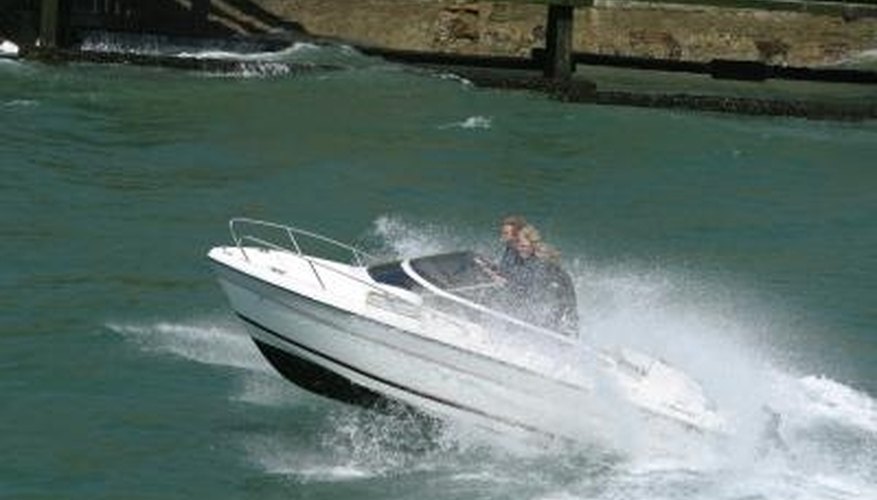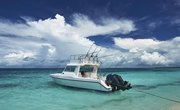
Piloting a boat in rolling waves can be dangerous. Weather fronts can move quickly on the open ocean. Calm seas can turn rough very quickly and boaters often have to pilot their crafts though large swells to return to port. Intense weather and rolling waves do not necessarily place a small boat in danger. A sturdy, well-outfitted boat with a well-prepared captain can effectively traverse heaving waves. Successfully navigating rolling waves begins with learning the principles of severe weather seamanship.

Jupiterimages/Photos.com/Getty Images
Slow down. If you find yourself in rough seas and rolling waves, trim your boat speed. Piloting your boat at high speed through rolling waves can cause broaching. Broaching occurs when a boat travels too quickly down the crest of a wave and the bow submerges under the next wave the boat encounters. The pressure of the wave over the bow of the boat causes the pilot to lose control, veering the boat off-course. The propeller of the motor can come out of the water, causing the pilot to lose total control of the steering. To avoid broaching, slow your boat down to a speed where the bow lifts with the waves.
Steer into the waves at an angle. Don't steer your boat directly into the oncoming waves. Rather, steer your boat through the waves at slight angles so that the boat rises and falls on its long axis. This is referred to as allowing the boat to pitch and roll, which decreases the amount of stress on you and your boat. You can run a zig-zag pattern in rougher seas to help you make progress. If you cannot make progress, keep your boat headed into the wind and adjust your speed so that you are not making headway until the rougher seas subside.
Get the water out. When you are piloting your boat in rolling waves, the water will likely come over the bow and sides. You need to be focused on piloting the boat through the waves, but make sure that you are removing the water that gets into the boat. If your boat has a bilge pump, put it on automatic. If you do not have a bilge pump, make sure that a passenger bails out any excess water.
Plan your route. Look ahead, paying attention to the waves, the distance between them and how they are breaking. Use this information to plan a safe route toward your destination. Planning your route will help you navigate through the waves at angles and avoid the potential sinking hazard of taking a wave directly over the bow. Continue to look ahead and plan your route through your entire trip.
Tips
- If your boat loses power in rough seas, put out your sea anchor to help keep your bow into the wind. You can use a bucket or other item if your boat does not have a sea anchor. If depth permits and you don't have another option, drop your boat's anchor, but only from the bow of the boat, never the stern.
References
Tips
- If your boat loses power in rough seas, put out your sea anchor to help keep your bow into the wind. You can use a bucket or other item if your boat does not have a sea anchor. If depth permits and you don't have another option, drop your boat's anchor, but only from the bow of the boat, never the stern.



